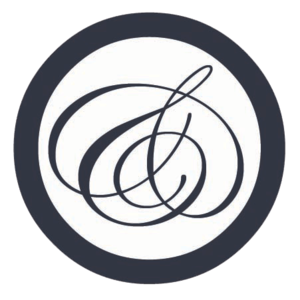Excerpt:
Avenue of Spies
by Alex Kershaw
(available now; reprinted from AVENUE OF SPIES. Copyright © 2015 by Alex Kershaw. Published by Crown, an imprint of Penguin Random House LLC.)
The best-selling author of The Liberator brings to life the incredible true story of an American doctor in Paris, and his heroic espionage efforts during World War II
The leafy Avenue Foch, one of the most exclusive residential streets in Nazi-occupied France, was Paris’s hotbed of daring spies, murderous secret police, amoral informers, and Vichy collaborators. So when American physician Sumner Jackson, who lived with his wife and young son Phillip at Number 11, found himself drawn into the Liberation network of the French resistance, he knew the stakes were impossibly high. Just down the road at Number 31 was the “mad sadist” Theodor Dannecker, an Eichmann protégé charged with deporting French Jews to concentration camps. And Number 84 housed the Parisian headquarters of the Gestapo, run by the most effective spy hunter in Nazi Germany.
From his office at the American Hospital, itself an epicenter of Allied and Axis intrigue, Jackson smuggled fallen Allied fighter pilots safely out of France, a job complicated by the hospital director’s close ties to collaborationist Vichy. After witnessing the brutal round-up of his Jewish friends, Jackson invited Liberation to officially operate out of his home at Number 11–but the noose soon began to tighten. When his secret life was discovered by his Nazi neighbors, he and his family were forced to undertake a journey into the dark heart of the war-torn continent from which there was little chance of return.
Drawing upon a wealth of primary source material and extensive interviews with Phillip Jackson, Alex Kershaw recreates the City of Light during its darkest days. The untold story of the Jackson family anchors the suspenseful narrative, and Kershaw dazzles readers with the vivid immediacy of the best spy thrillers. Awash with the tense atmosphere of World War II’s Europe, Avenue of Spies introduces us to the brave doctor who risked everything to defy Hitler.
DAY TRIPPER
It was just after dawn when Hitler’s Storch rumbled along the runway at Le Bourget airfield. A giant cloud of oil fumes that had hovered over Paris since June 1, had miraculously disappeared, just in time for the Führer’s visit. Five large Mercedes sedans were soon cruising along empty boulevards with their leather roofs rolled back, their occupants dressed in smart uniforms, heads bobbing in unison whenever they went over cobblestones.
At 6:35 a.m., Hitler’s convoy circled the Arc de Triomphe twice and then set off down Avenue Foch, the wealthiest street in all of vanquished Europe. The fifty-one-year-old Führer was soon passing the street lamps and elegant black iron railings designed by Gabriel Davioud that fronted the Jacksons’ ground floor home at number 11 and other buildings along the avenue.
To Hitler’s right, on the north side of the avenue, which was totally deserted, stood a white memorial to Jean-Charles Alphand, the chief engineer responsible for the avenue’s construction during the reign of Napoleon III. Alphand purposely made the promenade extra-wide so that wealthy Parisians in their open-top coaches could pass directly from the center of the city to the Bois de Boulogne. Named Avenue Foch in 1929, many of the elder residents still called it by its popular name during La Belle Époque: Avenue Bois.
Hitler was not impressed. He looked bored by the neat gardens with exotic flowers, the riding paths, the crisscrossing alleys, and the honey-colored mansions. Perhaps it was simply the name that displeased him. For the first time, Hitler seemed to lose interest in his surroundings. The motorcade made a sharp right midway along the avenue and headed south, toward the Seine.
By 9:00 a.m. the tour was over. Hitler would never return. “It was the dream of my life to be permitted to see Paris,” he told Albert Speer later that day. “I cannot say how happy I am to have that dream fulfilled today.”
That evening Speer met with Hitler in a room in a village in northern France. Hitler was seated alone at a small table.
“Wasn’t Paris beautiful?” he mused. “But Berlin must be made far more beautiful. In the past I often considered whether we would not have to destroy Paris. But when we are finished in Berlin, Paris will only be a shadow. So why should we destroy it?”
Hitler was lying. When the time came, he would destroy anything that suited his sadism. But Paris would be looted first—carefully—and the best of its portable wonders brought to him. In Mein Kampf, his autobiographical manifesto published in 1925, Hitler had clearly stated his true views about France. It was a great rival, its capital full of Bolshevik Jews, its people the “mortal enemy” of Germany. In his masterpiece of fascist and racist cant, one theme had dominated: his hatred for the Jews. Once Helmut Knochen and his colleagues—Hitler’s most loyal servants—had purged the city of these and other degenerates, Paris would enjoy a true golden age—a National Socialist “Belle Époque.”
Reprinted from AVENUE OF SPIES. Copyright © 2015 by Alex Kershaw. Published by Crown, an imprint of Penguin Random House LLC.


